Talking about something being sticky typically conjures up unpleasant sensations (ugh, who enjoys touching something sticky?). However, in the realm of business, stickiness is a highly desirable quality.
Customer stickiness, often represented by the image of sticky notes, evokes memories of schoolyard retorts like “I’m rubber, you’re glue; what you say bounces off me and sticks to you.” In this context, being sticky is a positive attribute. It signifies the ability of a brand to maintain a firm hold on its customers, fostering repeat purchases and long-term loyalty.
What is Customer Stickiness?
Customer stickiness is akin to retention and loyalty metrics, albeit with its distinct nuances. It revolves around gauging the likelihood of a customer to continue patronizing a particular product or service in a competitive marketplace.
Securing repeat purchases from customers significantly impacts revenue and return on investment (ROI). Studies indicate that repeat customers typically spend 67% more than new customers. Therefore, every subsequent purchase enhances the probability of future transactions, thereby increasing customer lifetime value and fostering enduring brand allegiance.
To calculate customer stickiness, one simply divides the number of repeat customers by the total customer base and multiplies by 100. For instance, if a company acquires 1,000 new subscribers monthly, among whom 150 make repeat purchases, the customer stickiness rate would be 15%.
Why Customer Stickiness Matters
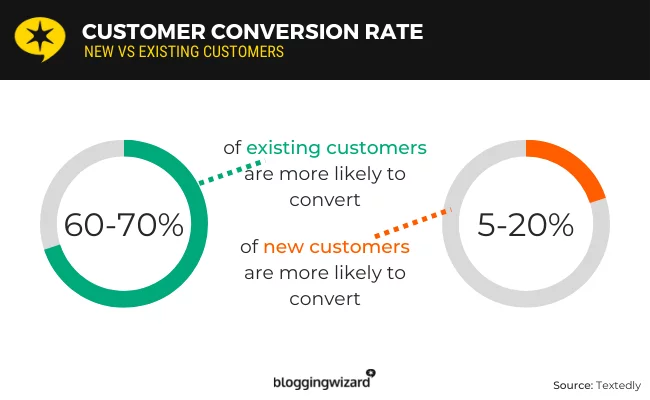
Customer stickiness holds paramount importance as it lays the foundation for cultivating loyal customer relationships. Sticky customers are more predisposed to becoming brand advocates, thereby bolstering brand reputation and fostering organic growth through positive word-of-mouth.
Moreover, an increase in customer stickiness positively influences various customer service metrics, including churn rate, customer retention, and lifetime value. Enhanced customer loyalty translates into higher referral rates, improved ratings and reviews, and ultimately, augmented revenue streams.
It’s crucial to distinguish between customer stickiness and customer loyalty. While the former pertains to repeat purchases driven by product or service value, the latter encompasses a deeper emotional connection with the brand, wherein customers become steadfast advocates who eschew alternative offerings even in the face of enticing incentives.
1. Offer High-Touch Onboarding
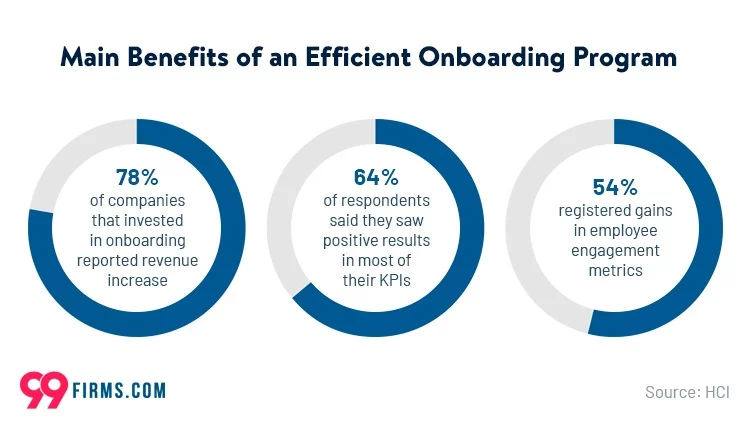
Customer stickiness hinges on the perceived value proposition of your product or service, which can vary based on customer demographics or their specific needs. Implementing high-touch onboarding strategies allows you to tailor the introduction of your offerings to each customer, maximizing their understanding of the unique benefits your solution provides.
High-touch onboarding involves assigning dedicated account managers who can swiftly elucidate the distinctive value proposition of your product or service to customers. These onboarding processes should be meticulously designed to align with the customer journey, addressing their pain points, motivations for purchase, and anticipated usage scenarios.
By gathering insights into the customer’s objectives and challenges, account managers can craft personalized onboarding experiences that resonate deeply with the customer’s needs. This hands-on approach ensures that users promptly grasp the value your solution offers, fostering a sense of immediate gratification and satisfaction.
When customers perceive tangible benefits from your product or service early on, they are more inclined to remain engaged and loyal over time. This initial positive experience lays the groundwork for future purchases, whether it be additional products, subscription renewals, or contract extensions, thereby enhancing customer stickiness.
2. Provide Repeated Value
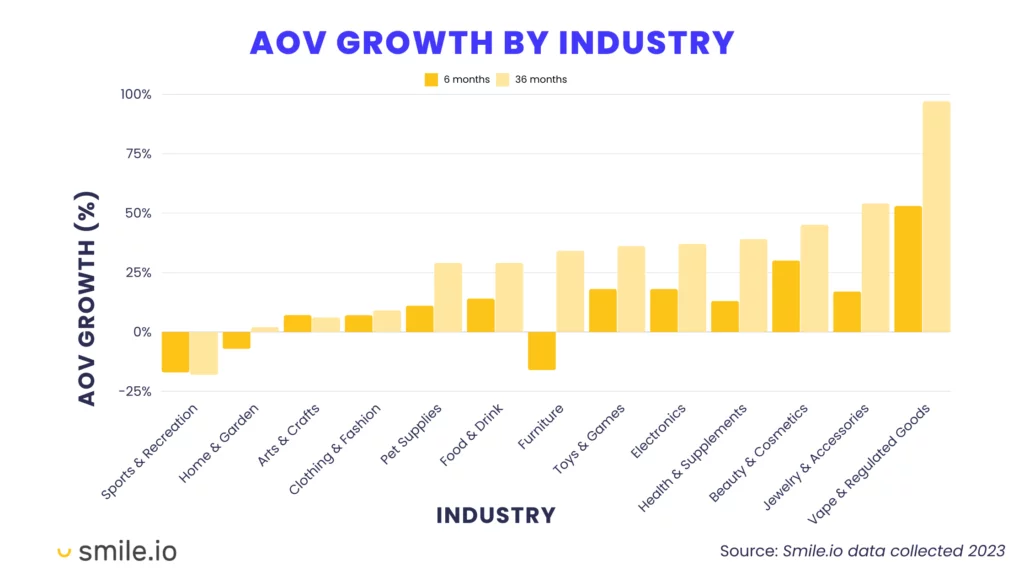
Sustained customer engagement and loyalty are nurtured through a continuous delivery of value. Regular product announcements and feature updates serve as opportunities to reinforce the value proposition of your offerings and encourage repeat purchases.
By consistently enhancing the functionality and capabilities of your product or service, you demonstrate an ongoing commitment to meeting the evolving needs and preferences of your customer base. These improvements not only add tangible value but also reinforce the perception of your brand as innovative and forward-thinking.
Each new feature or enhancement represents an opportunity to re-engage existing customers and entice them to explore additional offerings. This cyclical process of value delivery fosters a sense of anticipation and excitement among users, driving continued interaction and loyalty.
In essence, the equation is simple: continuous value delivery equals enhanced customer stickiness.
3. Know Your Value Proposition
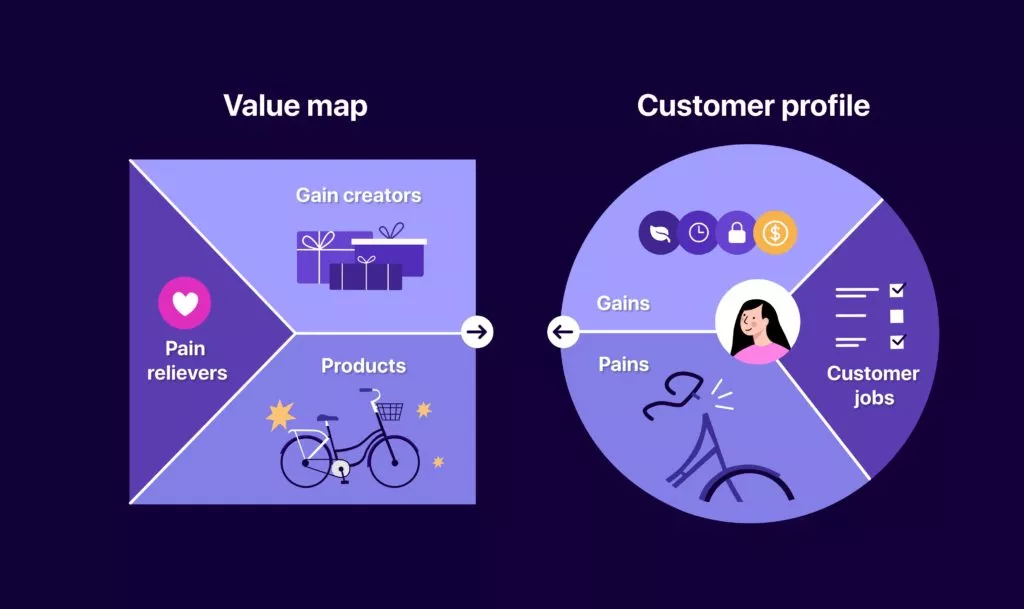
Central to fostering customer stickiness is a deep understanding of your value proposition—the unique promise of value that sets your product or service apart from competitors. Every member of your organization should be well-versed in your value proposition to ensure consistent and compelling messaging across all touchpoints.
Your company’s value proposition may be articulated in mission statements or values pages, or it may be communicated implicitly through training and onboarding processes. Regardless of the method, clarity on your value proposition empowers your team to effectively communicate the benefits of your offerings and deliver value to customers consistently.
By aligning your messaging and actions with your value proposition, you reinforce the perceived value of your brand in the minds of customers, thereby fostering long-term loyalty and retention.
In summary, a comprehensive understanding and effective communication of your value proposition are fundamental to cultivating customer stickiness and driving sustained business growth.
4. Assess the Customer Journey and Experience Regularly
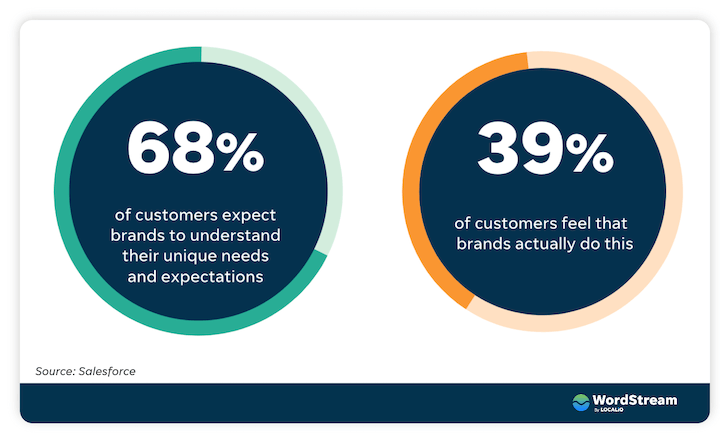
A cornerstone of fostering customer stickiness is ensuring that the journey your customers embark on aligns seamlessly with their expectations and needs. While mapping out the ideal customer journey is a crucial first step, it’s imperative to regularly assess and refine this journey to maintain relevance and effectiveness.
Regular evaluation of the customer journey involves scrutinizing each touchpoint and interaction that customers encounter throughout their experience with your brand. This includes analyzing the efficacy of onboarding processes, the clarity of communication channels, and the responsiveness of customer support mechanisms.
By gaining a comprehensive understanding of the customer journey, you can identify potential pain points or areas of friction that may impede customer satisfaction or retention. Armed with the insights, you can implement targeted optimizations to enhance the overall customer experience and fortify customer stickiness.
Key considerations during this assessment include identifying reasons for customer churn and devising strategies to address these issues proactively. By prioritizing enhancements that directly address customer pain points and deliver tangible value, you can bolster customer satisfaction and loyalty.
5. Conduct User Research
To truly grasp the factors driving customer loyalty and retention, it’s essential to delve into the minds of your customers through rigorous user research. This entails gathering direct feedback from customers through surveys, interviews, and usability testing to uncover the underlying motivations and preferences driving their purchasing decisions.
User research endeavors to unravel the intricacies of the customer experience, shedding light on what aspects of your product or service resonate most deeply with customers and compel them to remain loyal. By soliciting insights directly from customers, you can gain invaluable perspectives on the features, functionalities, and benefits that contribute most significantly to their satisfaction and stickiness.
Armed with these insights, refine your offerings, tailor your messaging, and optimize your customer journey to better align with the desires and expectations of your target audience. This customer-centric approach enables you to replicate and amplify the aspects of your product or service that foster genuine customer stickiness.
6. Add Customer Stickiness to Your Regularly Reported Metrics
Incorporating customer stickiness as a key performance indicator within your reporting framework is essential for tracking progress and evaluating the effectiveness of your retention strategies. By quantifying and monitoring customer stickiness over time, you can gauge the impact of initiatives aimed at enhancing customer satisfaction and loyalty.
Establishing a baseline measure of customer stickiness allows you to track changes and trends in customer behavior, providing actionable insights into the efficacy of your retention efforts. This data-driven approach empowers you to identify areas of improvement, iterate on existing strategies, and pivot as needed to drive sustained increases in customer stickiness.
7. Up- and Cross-Sell Similar Products or Services
Capitalizing on the goodwill and satisfaction generated by repeat purchases, up- and cross-selling initiatives present lucrative opportunities to further solidify customer relationships and drive incremental revenue. Leveraging insights gleaned from customer behavior and preferences, you can strategically recommend complementary products or services that align with their needs and preferences.
Whether through personalized recommendations from account managers, targeted email campaigns, or strategically placed prompts within your digital platforms, up- and cross-selling endeavors seek to capitalize on existing customer relationships and nurture ongoing engagement. By presenting customers with relevant offerings that enhance their overall experience and address unmet needs, you can foster deeper loyalty and maximize the lifetime value of each customer.
8. Send Personalized Email Content
Email marketing remains a powerful tool for nurturing customer relationships and fostering long-term loyalty. One effective strategy for enhancing customer stickiness is to leverage personalized email content, tailored to the unique preferences and behaviors of individual customers.
Reminder Emails: One application of personalized email content is in the form of reminder emails, which serve as gentle prompts to encourage customers to take desired actions, such as renewing a subscription or repurchasing a product. By strategically timing these reminders based on each customer's purchase history or subscription renewal date, you can ensure timely and relevant communication that reinforces the value proposition of your offerings.
Learn about transactional email here.
Promotional Emails: In addition to reminder emails, promotional emails offer an opportunity to engage customers and stimulate repeat purchases. By analyzing past purchase behavior and preferences, you can curate personalized product recommendations or exclusive offers that align with each customer's interests and buying patterns. This targeted approach not only enhances the relevance of your email content but also increases the likelihood of conversion by presenting customers with compelling incentives to revisit your brand.
Lifecycle Marketing: Another effective use of personalized email content is in the implementation of lifecycle marketing campaigns. By mapping out the customer journey and identify the key touchpoints, you can deliver timely and contextually relevant messages that guide customers through each stage of their relationship with your brand. From welcome emails that introduce new customers to your products or services to post-purchase follow-ups that solicit feedback and encourage advocacy, personalized email content can foster ongoing engagement and deepen customer loyalty over time.
Segmentation and Automation: Central to the success of personalized email marketing is the effective segmentation of your audience and the automation of email workflows. By segmenting the customer base based on factors such as purchase history, engagement level, and demographic information, you can tailor your messaging to resonate with the personalized needs and preferences of each segment. Furthermore, by automating the delivery of personalized email campaigns, you can ensure consistent and timely communication without requiring manual intervention, enabling you to scale your efforts efficiently while maintaining a high level of relevance and engagement.
Turning Sticky Customers into Loyal Advocates: Once you've succeeded in increasing customer stickiness and fostering repeat purchases, the next step is to cultivate deeper loyalty and advocacy among your customer base. This involves going beyond transactional interactions to build meaningful connections and emotional resonance with your customers.
Strategies for Turning Sticky Customers into Loyal Advocates:
- Deliver Exceptional Customer Experiences: Continuously strive to exceed customer expectations by delivering exceptional service and support at every touchpoint. Personalized email content can play a crucial role in this endeavor by providing timely assistance, proactive recommendations, and genuine expressions of appreciation for customer loyalty.
- Encourage User-generated Content and Reviews: Actively encourage customers to share their experiences through user-generated content and reviews. By leveraging the power of social proof, you can amplify the voices of satisfied customers and inspire trust and confidence in your brand among prospective buyers.
- Offer Exclusive Benefits and Rewards: Reward customer loyalty with exclusive benefits, rewards, and incentives that recognize and appreciate their ongoing patronage. Personalized email campaigns can be used to communicate these offers effectively, reinforcing the value of continued engagement with your brand and incentivizing repeat purchases.
- Cultivate Community and Engagement: Foster a sense of community and belonging among your customers by creating opportunities for interaction, collaboration, and shared experiences. Personalized email content can facilitate engagement by inviting customers to participate in exclusive events, contests, or surveys, fostering a sense of ownership and investment in your brand's success.
Real Life Cases of Customer Stickiness:
1. Build a Customer Loyalty Program
Implementing the customer loyalty program is a strategic initiative aimed at nurturing and rewarding customer loyalty, thereby enhancing customer stickiness and fostering long-term relationships. By offering enticing benefits and perks to repeat customers, businesses can incentivize continued purchases and strengthen brand loyalty.
Real-Life Example: Consider the loyalty program offered by Starbucks, known as "Starbucks Rewards." Customers earn stars for every purchase made using the Starbucks app or registered gift card, eventually unlocking rewards such as free drinks, food items, and even merchandise. This program not only encourages frequent visits but also creates a sense of exclusivity and appreciation among loyal patrons, driving increased customer retention and advocacy.
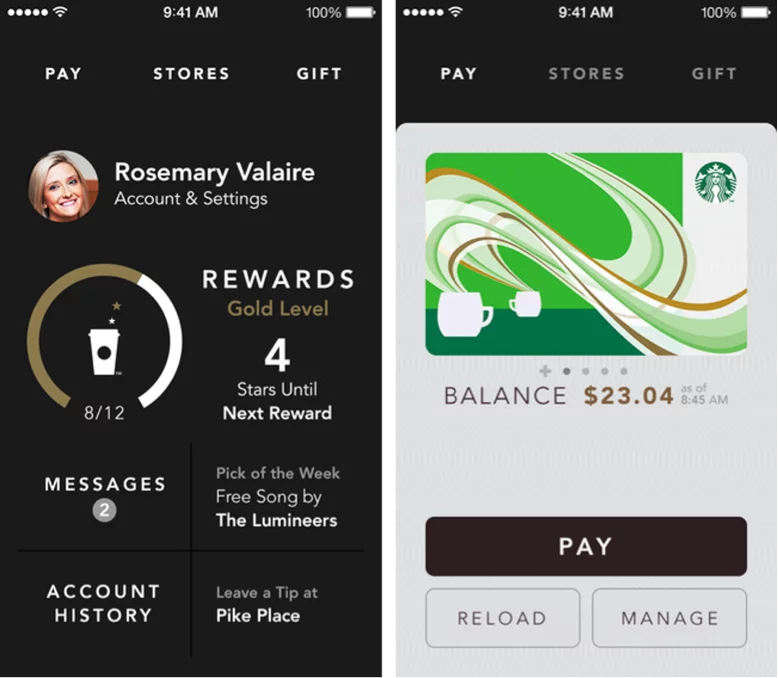
2. Implement Customer Surveys
Conducting customer surveys is a proactive approach to understanding customer needs, preferences, and satisfaction levels. By soliciting feedback through structured surveys, businesses can glean valuable insights into customer sentiments, identify the areas for improvement, and tailor their offerings to better meet user expectations.
Real-Life Example: Online retailer Amazon frequently utilizes customer surveys to gather feedback on several aspects of the shopping experience, including product selection, pricing, shipping, and customer service. By analyzing survey responses and incorporating actionable feedback into their business practices, Amazon continuously refines its operations to deliver exceptional value and customer satisfaction, thereby fostering loyalty and repeat purchases.

3. Track Customer Metrics such as NPS
Monitoring key customer metrics such as Net Promoter Score (NPS), Customer Satisfaction (CSAT), and churn rate is essential for gauging customer sentiment, loyalty, and overall satisfaction levels. By regularly tracking these metrics, businesses can identify the latest trends, measure the effectiveness of their strategies, and proactively address any issues impacting customer retention.
Real-Life Example: Online streaming platform Netflix utilizes sophisticated algorithms to track user engagement, satisfaction, and viewing habits. By analyzing metrics such as user ratings, viewing frequency, and retention rates, Netflix can tailor its content recommendations, optimize the user experience, and mitigate churn, ultimately fostering stronger customer loyalty and engagement.
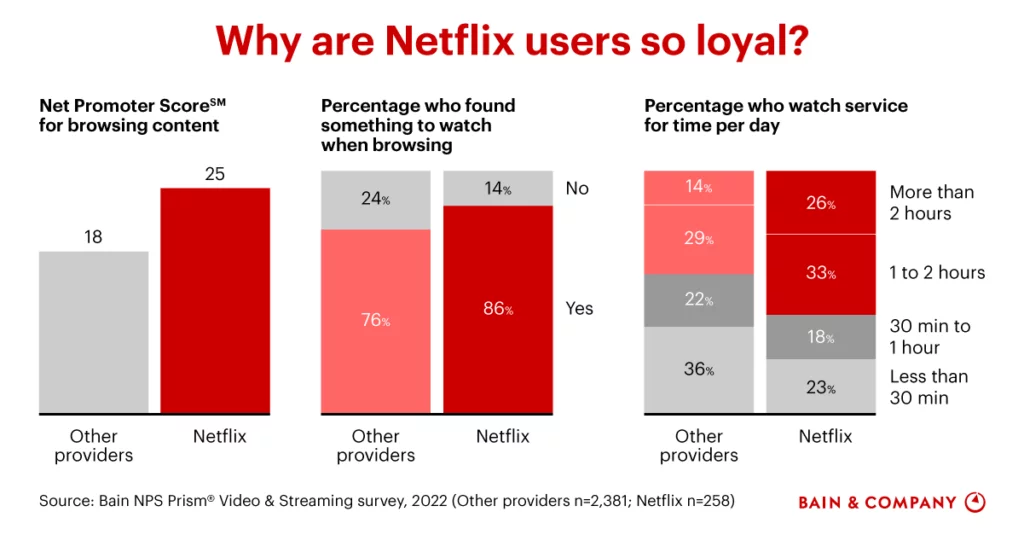
4. Invest in Customer Success
Investing in customer success initiatives is paramount to nurturing customer relationships and driving long-term loyalty. By allocating resources towards initiatives such as high-touch onboarding, user research, and ongoing support, businesses can demonstrate their commitment to delivering exceptional value and fostering customer satisfaction.
Real-Life Example: Software-as-a-Service (SaaS) provider Salesforce prioritizes customer success through its comprehensive "Trailblazer Community" and dedicated customer success managers. By offering extensive resources, training programs, and personalized support, Salesforce empowers customers to maximize the value of its platform, drive business outcomes, and cultivate lasting partnerships, thereby strengthening customer loyalty and retention.
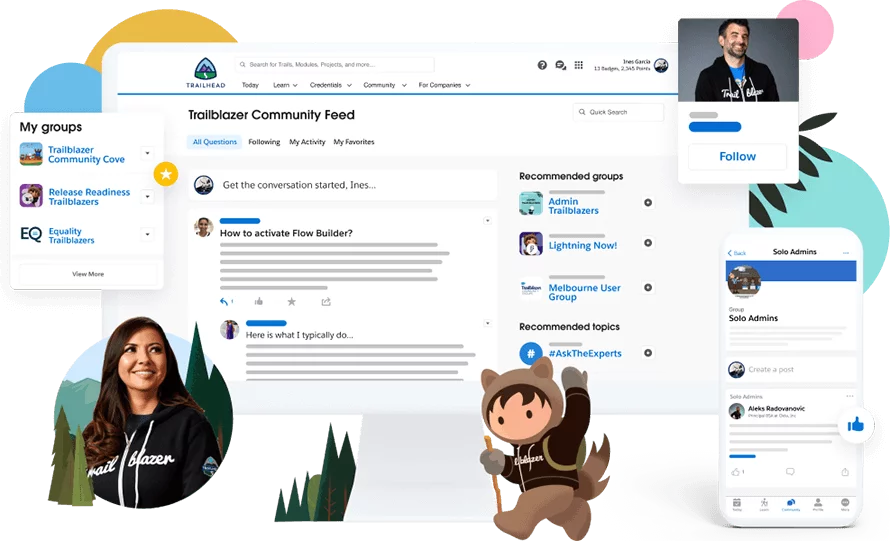
5. Continue Providing Amazing Service
Consistently delivering outstanding service and support is fundamental to building trust, loyalty, and advocacy among customers. By prioritizing customer satisfaction and maintaining high service standards, businesses can differentiate themselves from competitors, cultivate positive brand perceptions, and foster enduring relationships with their customer base.
Real-Life Example: Online retail giant Zappos is renowned for its legendary customer service, characterized by personalized interactions, hassle-free returns, and a relentless focus on customer satisfaction. By exceeding customer expectations and prioritizing service excellence, Zappos has earned a devoted following of loyal customers who continue to choose the brand for their footwear and apparel needs.
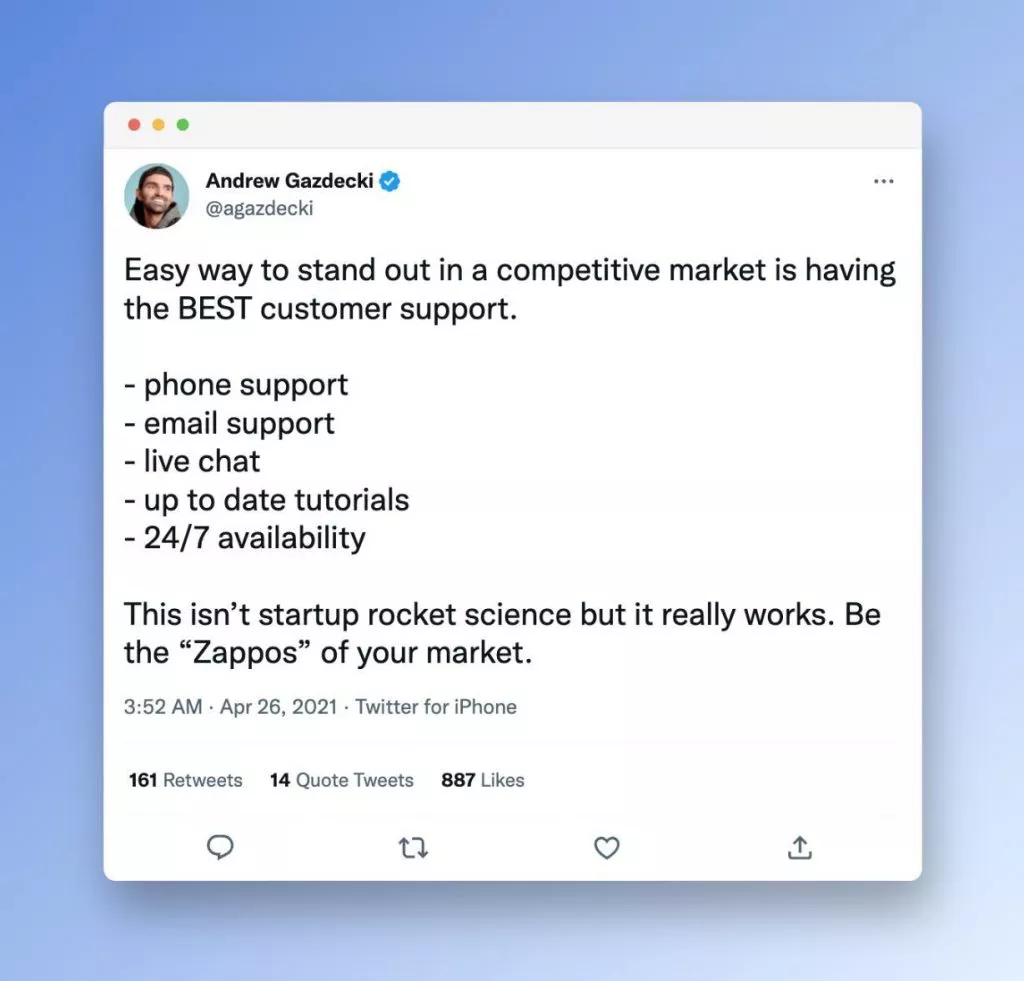
Conclusion:
Customer stickiness is a critical aspect for any business aiming to achieve long-term success and sustainable growth. It refers to the ability of a company to retain customers and encourage repeat business. High customer stickiness leads to increased customer lifetime value, reduced acquisition costs, and enhanced brand loyalty.
FAQs on Customer Stickiness:
What role does customer feedback play in enhancing stickiness?
Customer feedback is crucial for understanding customer needs, preferences, and pain points. By addressing feedback and making improvements, businesses can enhance customer satisfaction and loyalty, thereby increasing stickiness.
Can technology help improve customer stickiness?
Yes, technology can significantly improve customer stickiness by enabling personalized experiences, streamlining customer interactions, providing data-driven insights, and facilitating seamless communication through various digital channels.
What is the difference between customer stickiness and customer loyalty?
While both terms are related, customer stickiness specifically refers to the tendency of customers to continue using a company's products or services, whereas customer loyalty encompasses a broader range of behaviors, including repeat purchases, positive word-of-mouth, and emotional attachment to the brand.



